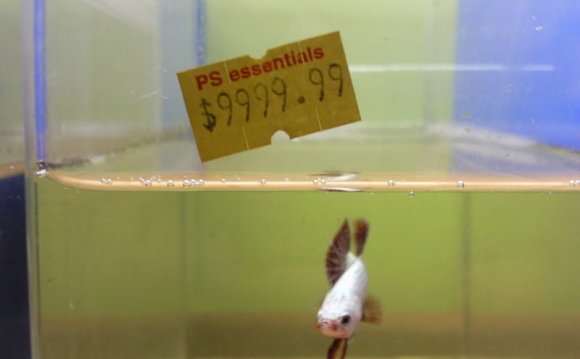
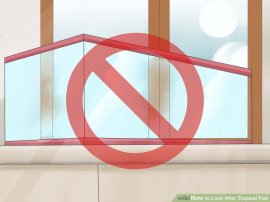 Choose the right location. When setting up your aquarium, you need to be sure to put it in a location that will be least stressful for your fish.
Choose the right location. When setting up your aquarium, you need to be sure to put it in a location that will be least stressful for your fish.
- Avoid locations that will expose the fish to loud noises, like near a TV or sound system or near a washer and dryer, etc.
- Avoid locations that will affect the temperature of the water, like near a heater, radiator, or cooling unit.
- Avoid locations where frequent vibrations with affect the fish, such as near frequently opening and closing doors or in high foot-traffic areas.
- Don’t place your aquarium under a direct natural light source, like a skylight or window, because it can increase algae production and throw off the balance of the tank’s ecosystem.
- Don't place your aquarium in a place where there could potentially be drafts, such as near windows and doors.
- Mechanical filtration uses a pump to draw water through a sponge, which will trap debris. Mechanical filtration helps keep the tank water looking clean and clear, though most tropical fish don’t require crystal-clear water for their habitat, so the clear water is mostly for your benefit.
- Biological filtration also draws water through a sponge, but in this case the sponge contains bacteria that remove pollutants.
- Chemical filtration uses a special filter media that removes chemical pollutants.
- If you have a saltwater tank, you’ll also need a protein skimmer, a filtration device that removes dissolved organics from the water.
- The most important factor when choosing a heater-stat is appropriate wattage.
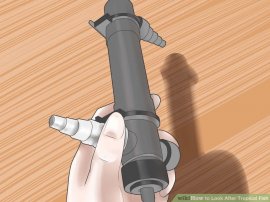 Be sure to choose one with high enough wattage to warm the size of aquarium you own, but don’t buy one with so much wattage that it will overheat the tank. The general rule is five watts per gallon.
Be sure to choose one with high enough wattage to warm the size of aquarium you own, but don’t buy one with so much wattage that it will overheat the tank. The general rule is five watts per gallon.
- Air pumps are typically optional, as most filtration systems introduce ample oxygen into the water. They can be useful, however, in tanks where large amounts of oxygen is used up by the environment, such as if your tank features a lot of vegetation.
- Some people opt to use a water pump for the aesthetic value added by the floating bubbles.
- Fluorescent tubes are relatively inexpensive to run and don’t produce significant amounts of heat, making them well suited for use in aquariums.
- Different types of lighting are better suited to encouraging plant growth or enhancing the color of your fish, but generally a full-spectrum light will offer both pleasant lighting and lighting suitable for plants.
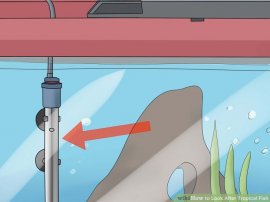 Carefully select which environmental features (rocks, plants, ornaments) you include in your aquarium.
Carefully select which environmental features (rocks, plants, ornaments) you include in your aquarium.
- The environment must closely emulate the fish’s natural habitat or they will become stressed, sick, and will possibly even die.
- If you’re unsure of the proper environment for your fish, consult your local fish or aquarium store.
- If you’re setting up a saltwater aquarium, it’s strongly recommended that you add live rock, which are pieces of coral reef that naturally break or fall off. Live rock contains many live organisms necessary to a healthy tank ecosystem.
- Running the aquarium before putting in any fish is also important because it allows any harmful impurities to dissolve.
- Good bacteria are a necessary and integral part of your aquarium’s environment. Without them, the delicate ecosystem fish need to survive won’t be able to establish itself.
Part 2
Introducing Fish to the Aquarium- Add resilient fish. When choosing the first few fish you plan to introduce to your aquarium, seek out hardier types. Certain types of fish are better able to survive in an environment with high levels of ammonia and nitrites, which your aquarium will likely have at this point.
- More resilient fish include danios, gouramis, and livebearers.
- Don’t add more vulnerable types of fish to this initial tank environment as they likely won’t survive.
- Ask an employee at the store from which you plan to purchase the fish to help you choose types of fish best suited to a brand-new aquarium.
- Avoid overcrowding the aquarium.
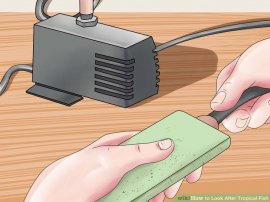 Don’t add more than three fish per week to the tank or you can raise the ammonia in the environment to toxic levels that can kill your fish.
Don’t add more than three fish per week to the tank or you can raise the ammonia in the environment to toxic levels that can kill your fish.
- Choose the right fish. As you gradually begin to populate your aquarium, choose your fish very carefully. There are hundreds of kinds of tropical fish, and they don’t all live well together-some are aggressive, some are territorial, some are predatory, and so on. Make sure to choose types of fish that can live together in the tank and won’t fight or kill each other.
- Choosing the wrong fish not only subjects the fish to unnecessary suffering, it’s also something that’s easily avoidable with a little research.
- Do your research and consult with an employee at a fish or aquarium retailer so that you know each of your fish’s needs. In addition to making sure your fish will get along, make sure they have compatible living-environment needs. If they all need different kinds of environments to thrive, your ecosystem won’t be able to accommodate those varied needs.
- In addition to ensuring that your fish have similar habitat needs, be sure the fish also have similar temperature and pH needs.
- Introduce new fish gradually. Don’t dump a new fish directly into the aquarium. Fish need to be able to regulate their temperature, and being put directly into new water can cause them significant distress.
- Turn the tank light off so that the bright light won’t disturb the new fish.
- For freshwater fish, float the plastic bag-still closed-in which you transported your new fish in the tank for about half an hour.
- Open the bag, put some of the tank water in, and let it sit for at least 15 minutes.
- Gently net the fish out.
- Remove the bag once the fish has been removed.
- Leave the tank light off for another few hours or for the rest of the day.
- For saltwater fish, you must first quarantine your new fish in a separate tank before introducing it to your aquarium.
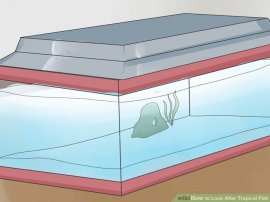
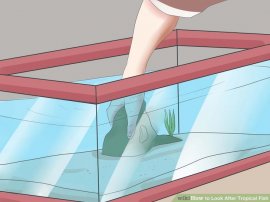
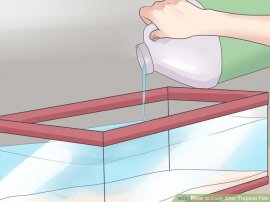

Source: www.wikihow.com









